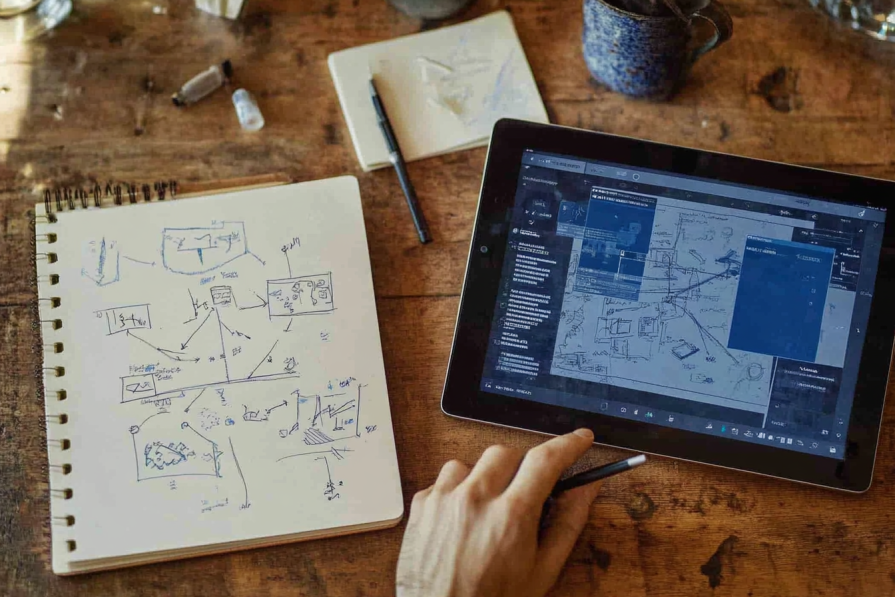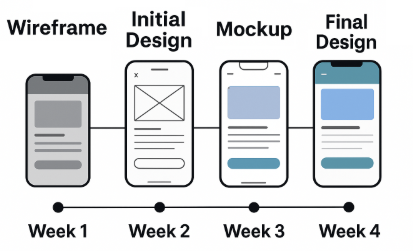How to effectively manage design teams
I’ll be honest — I often feel a bit awkward in design meetings. While I can appreciate a clean UI when I see one or praise a well-executed flow, I always feel like I don’t really belong in conversations about what will make the absolute best UX decision.
I’m not a designer.
I never claimed to be.
However, as a product manager, you still need to ship products that are polished, intuitive, and, ideally, appreciated by users. But can you guide a group of experts towards an optimal outcome while not sharing their skillset?
You absolutely can! Between ignoring your design team and micromanaging them, there’s a sweet spot where you all can deliver great results.
Communicate the goal, not the output
Designers don’t want or need you to tell them exactly what to draw. It’s simply not for you to decide.
You might be a product manager with a design background and know what you’re doing. But, even then, you should put your design days behind you and focus on the product responsibilities.
In the name of allowing “experts to be experts,” provide your team with what you want to achieve with the UI you ask them to build:
- What’s the problem you want to solve?
- How does it fit with the rest of the product?
- What are the priorities of the design (clarity, speed, flashiness)?
- Who is it built for?
Answering those and any follow-up questions helps to put your design team in the right frame of mind and understand the full context of what you need. While it might feel like an hour or two of additional meetings, trust me, this is the way to go.
Start with a scrappy wireframe
I’m a big fan of simple wireframes. When I have a concept in my head, I’ll throw together a quick sketch using Balsamiq, FigJam, or even a plain pen and paper.
It’s not about creating pixel-perfect mock-ups or asking the team to “polish” the drawing that could’ve been done by a five-year-old.
It’s just a tool to communicate intent:

Think of it as saying, “Here’s what I’m imagining, just in case I’m not explaining myself too well. Please treat this as a point of inspiration, but a basis I expect you to work off.”
Doing so helps reduce miscommunication early on and gives the design team a starting point to push back, improve, or refine.
Show inspiration, not imitation
If I come across a product that nailed a similar problem, I’ll share it. Just like with the wireframe, it’s not about sharing blueprints, but as a spark:
- “Hey, look how Revolut guides users through this verification process. I like how simple and non-threatening it feels”
- “Here’s how bank X and car-sharing app Y perform document verification. Do you think we could do something better with our implementation?”
This opens up a discussion, not a directive. Great designers want context, not commands. Sharing examples from other products can fuel creativity without boxing anyone in.
However, it’s worth it to ask them later if those inspirations were helpful to them. Perhaps they prefer to do their own research and what you brought to the table was a waste of time.
Recognize their expertise in communication
This one’s big. As already mentioned, you’re not, nor are you supposed to be, the expert in color contrast, spacing systems, or UI heuristics. Your design team is.
There’s nothing wrong with mentioning that you trust your team, their skills, and no matter what you say, in the end, it’s expected that they choose and deliver the best possible UI solution on their own.
Of course, this doesn’t mean that you have to accept everything presented to you. You’re also within your rights to express doubts or point out aspects of the UI that don’t feel right.
In the end, it’s you, the product manager, who will be responsible for the performance of the released product, and you should feel comfortable signing your name under the design. If not, just work together until you can.
Set milestones and regular check-ins
While creative work needs room to breathe, it also needs structure. You can’t wait forever until the design team finally settles on a UI they feel is right. Creativity hates rushing, but a good deadline (known well in advance) can also be a great motivator to finally settle on something.
Of course, it’s not about giving your initial guidance, deadline, and then forgetting about the whole ordeal until the delivery day arrives. It’s a great idea to establish regular check-ins and consultation sessions in order to ensure everything is going in the right direction:

This doesn’t have to be a meeting. An email or Slack check-in might work as well. Just make sure that the design you’re waiting for isn’t a waterfall project but an ongoing dialogue with everyone involved.
Loop devs and stakeholders in early
One of the biggest investments you can make in a great design is to make sure your developers and relevant stakeholders are looped in early, ideally at a project kick-off meeting.
It should be really clear by now that design isn’t just about pretty screens. It’s about what’s feasible to build and what aligns with the broader product strategy. If engineers give feedback early or mid-design (instead of post-handoff), you avoid wasted effort and friction.
The same goes for your execs or sales folks. Involve them early in the process so you don’t get a “this doesn’t work for us” comment right before launch:

There’s one additional aspect of having developers and designers talk as early as possible — it allows you to agree if a potentially big piece of design work needs to be done in several iterations.
Final thoughts
If you’re a PM feeling a little out of place in design conversations, I promise it gets easier as you adjust to working with your design team. On the other hand, if you’re having problems letting go of control, the best course of action is to simply do it (even when you feel like you could do a better job).
How are your designers supposed to grow if you don’t let them use their creativity? Focus on clarity over control.
Treat your design team like the experts they are. Stay curious. Ask questions. Celebrate the heck out of great work when it lands. Mentor and guide them, but don’t do work for them. It’ll be a great investment into their future and yours.
How?
By simply having more time, you can focus on your core responsibilities and not create or polish the design.
Featured image source: IconScout
The post How to effectively manage design teams appeared first on LogRocket Blog.
This post first appeared on Read More


